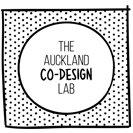Policy By Design - Emerging Themes From Policy Practitioners
By Rebekah Forman
The role of design in policy making is an area of growing interest here in New Zealand and overseas. It something the Co-design Lab has been exploring with partners in local and central government over the past 12 months.
In November 2018, over 70 people from across government came together in Wellington for a 1 day seminar and workshop hosted by the Policy Project in the Department of Prime Minister and Cabinet. The Policy Project team have written two conversation tracker reports summarising the morning seminar and afternoon workshop.
The seminar also saw the launch of a collaborative report “7 cases studies from Aotearoa NZ” exploring the intersections between design and policy across seven different projects.
EXPLORING BARRIERS AND ENABLERS
This blog shares some additional insights from Wellington. The sessions provided an opportunity to hear directly from policy staff from across government about the barriers and enablers they face exploring and applying new ways of working.
The key themes flow on from what we heard at a 2 day Policy by Design Symposium held in Auckland in May 2018 plus wider engagement with policy and operational teams.
While there is a growing interest, activity and momentum, people feel they are being held back by gaps in capability and the organisational conditions to support new ways of working.
1. Policymakers need to give more weight to the lived experience of people impacted by policy. Lived experience adds richness to our understanding of the problem(s), and to the analysis we provide to decision-makers. This means making more of an effort to find and bring these voices into the process, and treating qualitative insights as a legitimate source of evidence to sit alongside quantitative data.
We need to embrace complexity and get closer to real people, their needs and how our policies impact them. “We need a richer understanding of the problem and the impacts”… “We need to see people as more than a number.”
2. Integrating design mind-sets and methods requires new and different ways of working that can challenge the conventional policy cycle and ‘policy shop culture’. This includes rethinking who the ‘customers’ of policy are and how we engage them in the policymaking process, how we test early ideas, and how we collaborate with others inside and outside the policy community to share data, insights and learning.
Design approaches require us to rethink who the real ‘customers’ of policy are – i.e. citizens, frontline staff, providers… and/or ministers, managers and other departments? – and reorienting ourselves accordingly (yet… the reality is policymaking takes place in a political environment).
Policymakers aren’t always doing engagement/consultation activities in the right way or at the right stage – it needs to be upfront, not left till we already have options (i.e. solutions) sketched out. We can modify later in theory, but “it’s hard if we miss the point in the first place”.
3. Policymakers don’t feel they have the right skills and experience to plan and lead design work; our workforce lacks diversity and we tend to rely on agencies rather than develop internal capability. There is little to draw on in terms of design training, guidance or tools that is policy-specific, or which recognises our local context. People would welcome structured opportunities to learn from others.
Policy people don’t feel they have the necessary skills / knowledge to do design; e.g. working directly with communities, workshop design and facilitation, and iterative project management.
“We need to build partnerships between policy-makers and design practitioners… to co-create new approaches.”There are no (policy-specific) design training courses, frameworks, tools; no community of practice or centre of excellence, to build capability and ensure consistency.
”We need a shared understanding of design… and when to use different methodologies.”“The language is a barrier for me, but the principle is simple… we shouldn’t over-complicate it.”
4. Policymakers want a clear mandate from their leaders to do design work. This is seen as essential to unlock resources and the permission to experiment, collaborate and iterate. Although conditions are seen as favourable for innovation work, many policymakers want more explicit direction from above. Access to examples of successful design work in local policy shops could help to persuade risk averse managers.
People need to see evidence that processes have worked and produced the desired outcomes.
“More widespread understanding of the benefits and outcomes of [design processes] will improve [their] legitimacy... making it easier to secure time and resources to do it!”“Who are the champions of design in the public service?”
WE ASKED PARTICIPANTS TO SHARE WHAT THEY WANTED TO SEE NEXT.
IMMEDIATE HORIZON
“Collaboration, communication, openness to new ideas and ways of working.”
Stay in touch with others who are interested / practicing in this area
Follow-up sessions – think about who is in the room, and who else could be brought in
“[We need] more opportunities like this.”… “safe spaces to create friction.”
MEDIUM HORIZON
“Capture and share more case studies… [to] help achieve decision-makers buy-in.”
Establish a community of practice – share what we’re doing and learning
“Even though we are keen, interested, optimistic, we still do not have the skills and capabilities to be effective service designers. Could we all learn from each other?”
Practical guidance, resources, training to develop skills and build confidence
LONGER HORIZON
“Identify some specific areas we can use a design approach, demonstrate value and learn from this.”
Analyse the barriers within our organisations so we can move the work forward collectively:
“What do we need to do to demonstrate credibility and validity… take traditional policy thinkers on the journey?”
Throughout 2019 we will be building on this work and are keen to collaborate with people or teams interested in the intersection between policy and design.
You can contact us via email or twitter (@CodesignLab_AKL).



